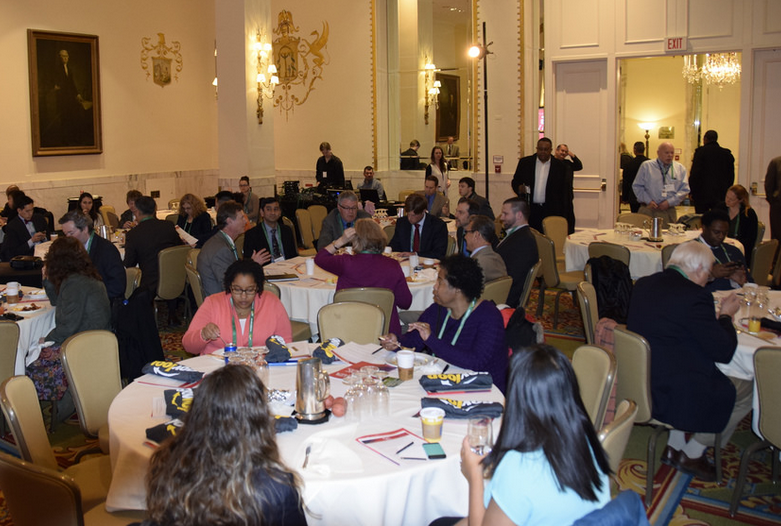The concept of big data is far from new — but it seems to be an especially hot topic lately. Why that is, and how your agency can find the best tools to utilize your data, was the focus of several sponsor presentations at GovLoop’s latest event, The Big Data Playbook training.
Tariq Islam of Oracle focused on the fact that big data can be a powerhouse for change — but it’s all about overcoming barriers to new adoptions of technology that you may not be familiar with first.
“The idea here is that big data encompasses the utilization of the right technology,” Islam said. “You have to use the right technology to get the right data.”
Islam stressed that you not only have to have the right tools — but also the right kind of people and resources. This can be a challenge, though, because not as many people are familiar with the technologies used to access big data.
“Most of us aren’t necessarily familiar with Hadoop, or NoSQL, or other tools. It’s not like Facebook or Google where everyone knows how to use them,” Islam said. A possible solution? Oracle’s Big Data Discovery, an easy-to-use data visualization tool.
You can see Islam’s slides here.
Richard Breakiron of ViON talked about how the fact that big data is not actually that new, though it seems to be a buzzword on everybody’s lips. “Big data goes back quite a while,” he laughed. “Do you have car insurance? Is your premium the same as your neighbor’s? Probably not, and that’s big data in effect.”
But one of the reasons that big data is becoming ever more popular these days, Breakiron said, is that many of the aspects and ability to take advantage of big data are unprecedented.
What’s new is the unprecedented ability to store data,” said Breakiron. “There’s unprecedented amounts and types of data, and unprecedented computing power, and unprecedented ability to reach data and information from anywhere in the world in near real time.”
This is why it’s ever more important to try to take advantage of big data and figure out the issues you can attack with it, said Breakiron.
You can see Breakiron’s full presentation here.
Kevin Morgan of MarkLogic spoke about how you can drive big data into your mission.
“As we all know, big data is a resource, and time to value is very important,” Morgan noted. “So the first piece to good use of big data is your approach. Enterprise requirements means power + agility + reliability.”
Morgan gave an example of a Forest Service employee who might be looking at data about wildfires.
“They might be looking at weather reports, geospatial reports, historical trends, or social media for updates,” Morgan poitned out. “So how do we build an application that allows them to look at all that different data? You need an architecture that supports all those components in one?”
Morgan noted that that capability to look across the enterprise is what MarkLogic NoSQL can provide end users.
Check out Morgan’s slides on this topic here.
Kapil Bakshi of Cisco focused on the different approaches an end user can take to big data and analytics. Focusing on big data now is especially critical, he said, simply because there is so much more of it. This is caused by the data being constantly created by the Internet of Things.
With this enormous amount of new data, asked Bakshi, “do traditional data analytics still apply in this era? You collect, you store, then you analyze it. Is that still how it should happen?”
Bakshi said, “That approach does still apply but it needs to be augmented and reexamined.” He especially focused on the need to look at data virtualization –for your big data warehouse expansion.
Bakshi’s slides are here for you to view.
Webster Mudge of Cloudera was the last lightning sponsor speaker, and his presentation talked about data strategy in a nutshell — what he referred to as a “stepwise approach to big data adoption and pervasive analytics.”
To win at the big data adoption game at your agency, Mudge said, you must have a strong business sponsor for your overall big data mission as well as business stakeholders for individual use cases.
“You must have identified the challenge, have advocates from within, and funding and resources,” Mudge explained. “Ask yourself, how do I show an ROI on this big data program?”
Data is your most important asset only if your data can help achieve your objectives and mission first, Mudge said. “Don’t jump into the middle of big data. You have to build your base, your supporters, and your use case to get to that point first. And that’s what we do at Cloudera. We do think about the infrastructure first.”
See Mudge’s full presentation at this link.
See more coverage of our big data event at this link.
